这篇文章来源于中科院Zhouchen Lin 教授的report,有幸读到,和大家分享一下。技术和paper是相辅相成的,一直认为学到了技术或者在学习的过程中有任何的想法和疑问都应该以文字的形式记录下来,paper,博客,log什么的都可以,不然记忆会随着时光的飞逝擦除的,而且在当今这个技术飞速更迭的时代,记录过去的工作应该成为每周总结的必修课。
1 Why write papers?
Incorrect answers:
I have to graduate/promote//My boss asked me to write
I have to start because
I will graduate half a year later ,the conference deadline is only a month away
Correct answers:
Claim your credit on new findings
Critical for your academic career
Help refine your thought
I hear and I forget;
I see and I memorize;
I write and I understand.
Documentation
Guard against forgetting
Informative for other people (save your time to explainrepeatedly)
Necessary in many other cases (such as patent filing)
Necessary in many other cases (such as patent filing)
I can start because I
have passion with my invention/concept
am compelled to speak and write
have truly novel concept/algorithm/procedure/architecture
have vision or survey that provides value for the research community
have solid and sustainable results
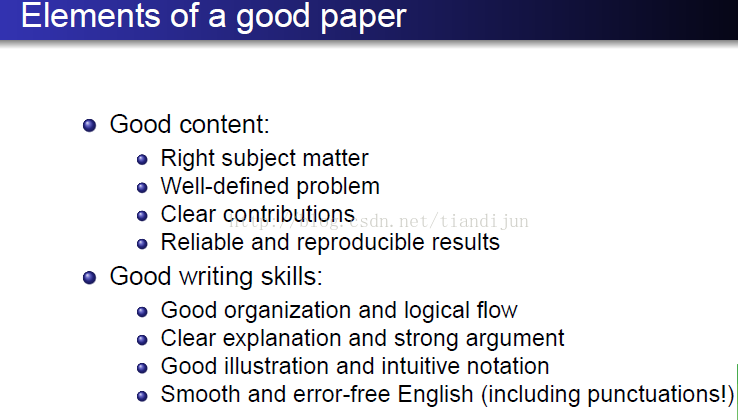
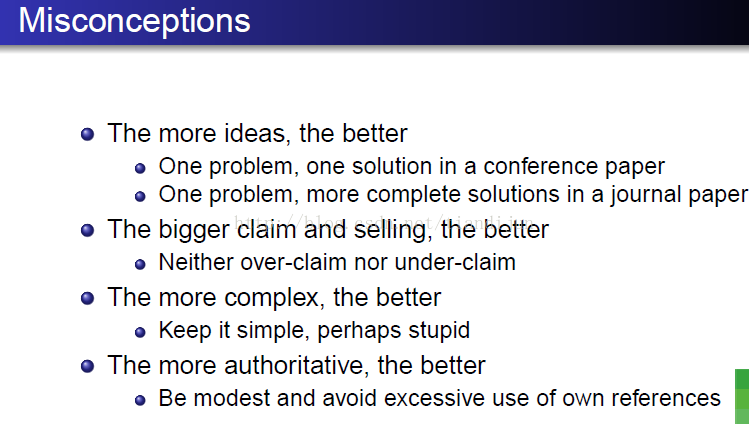
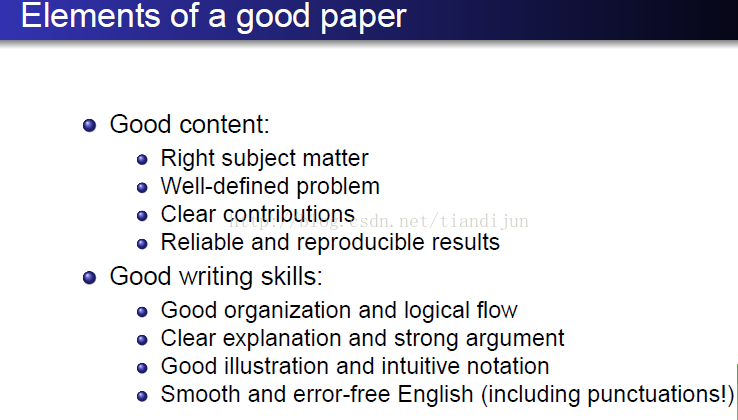
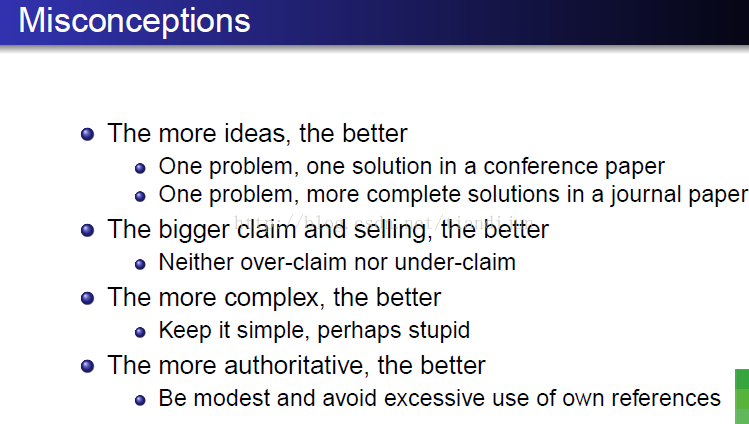
2 About reviewers
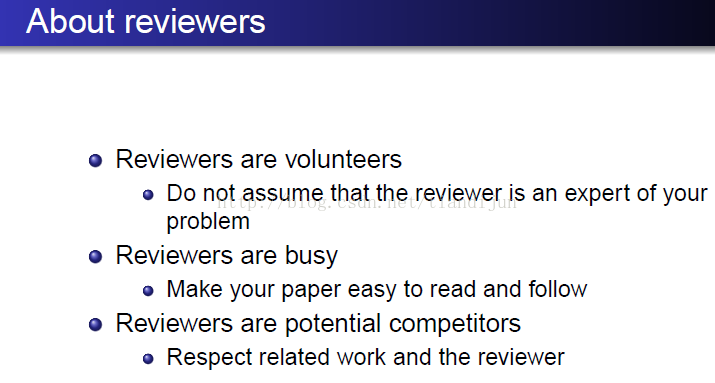
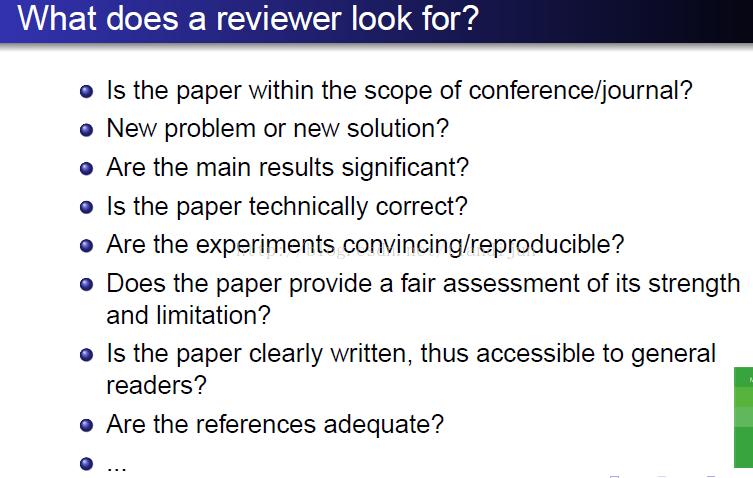
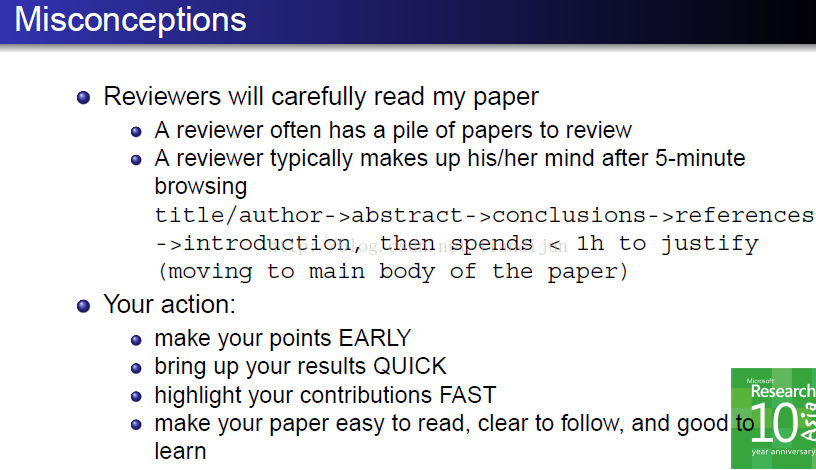

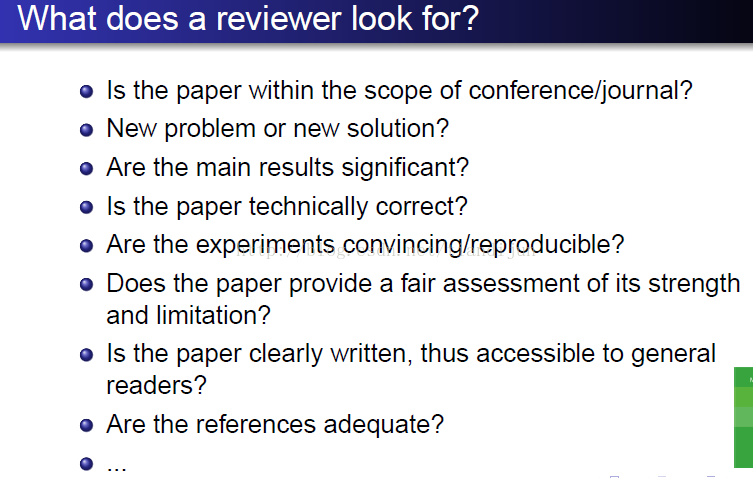
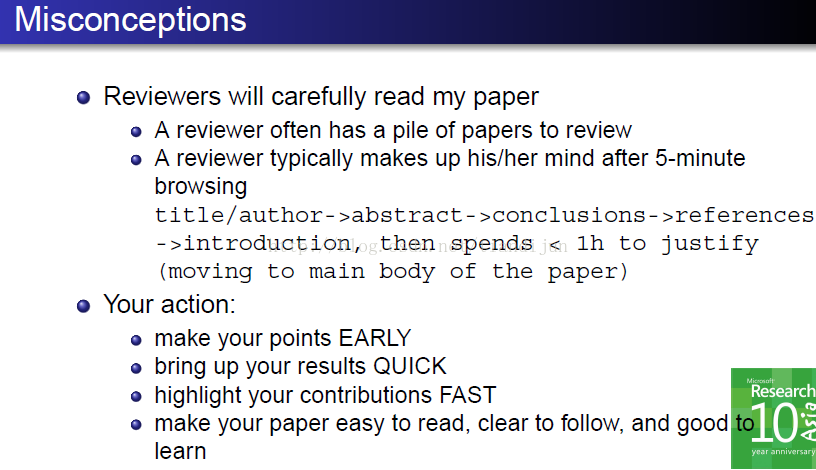
3 Components of a paper
Paper structure and general tips for every component
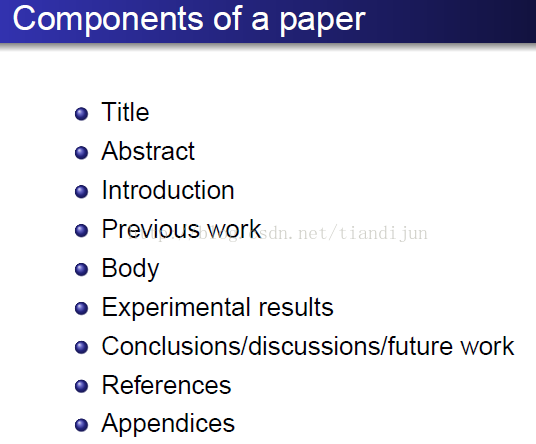
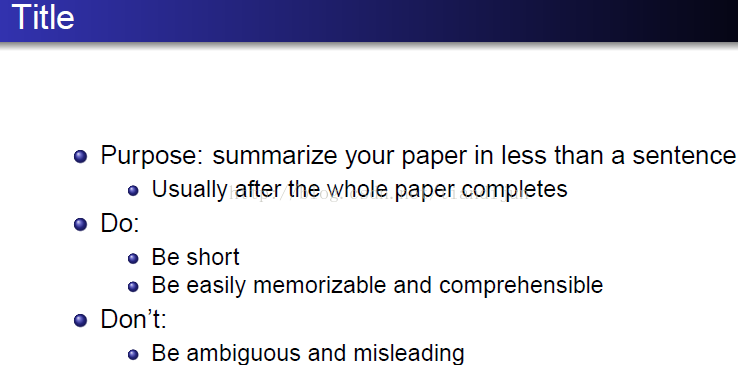
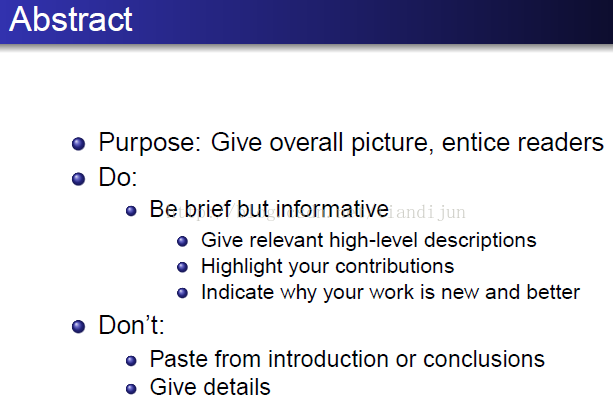
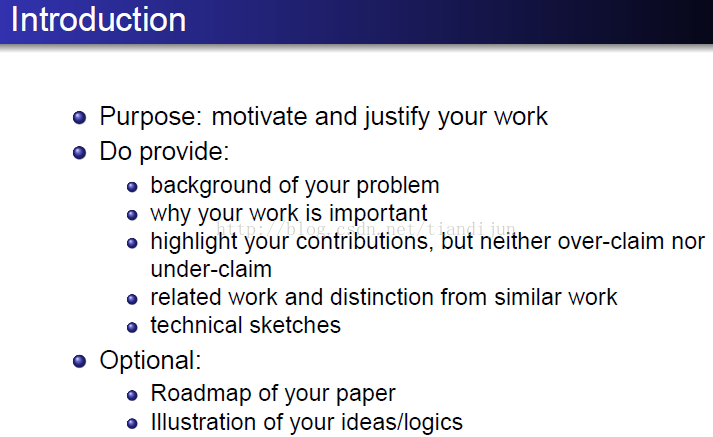

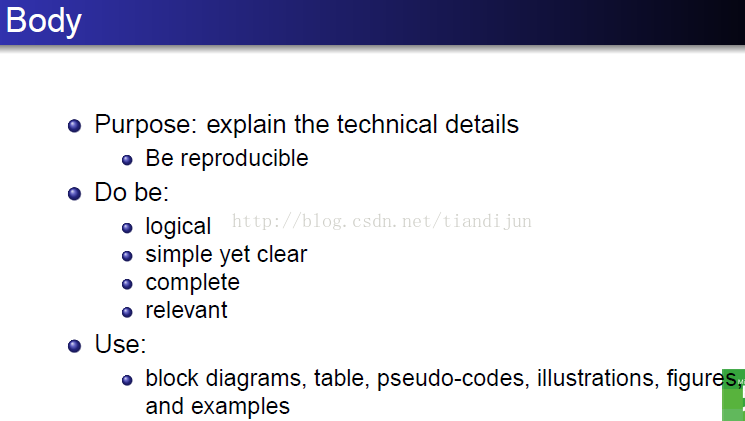
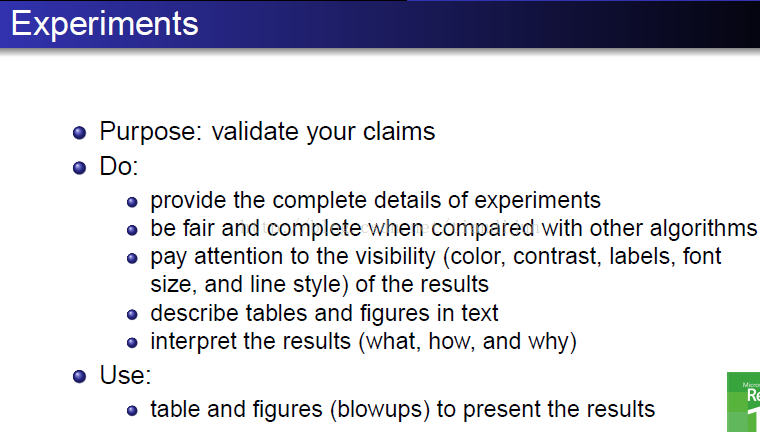
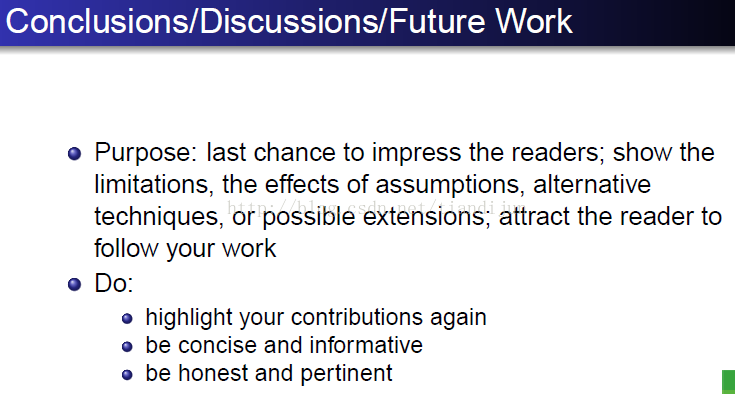
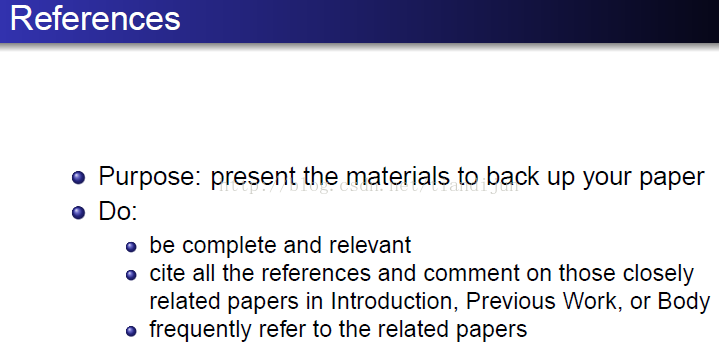
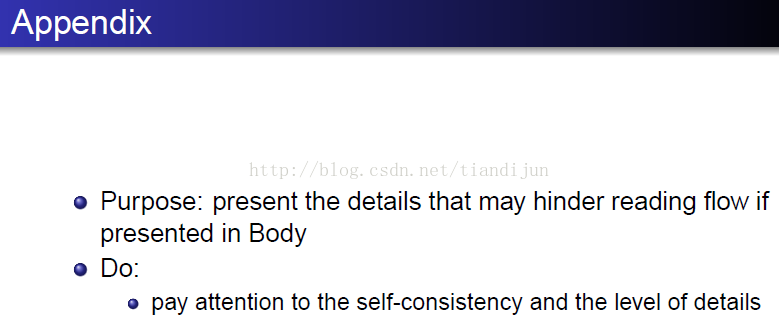
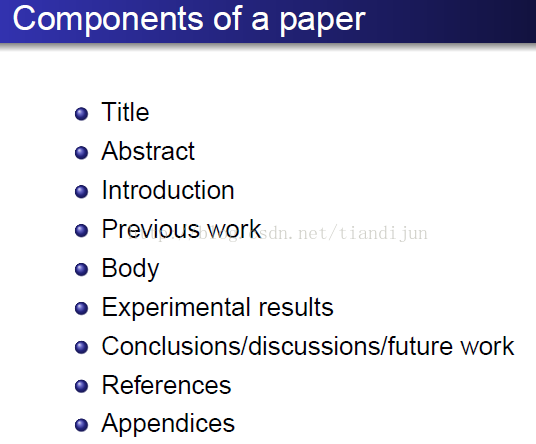
4 Paper writing process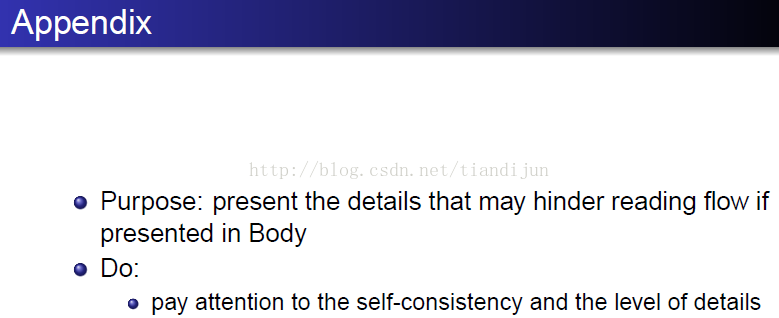
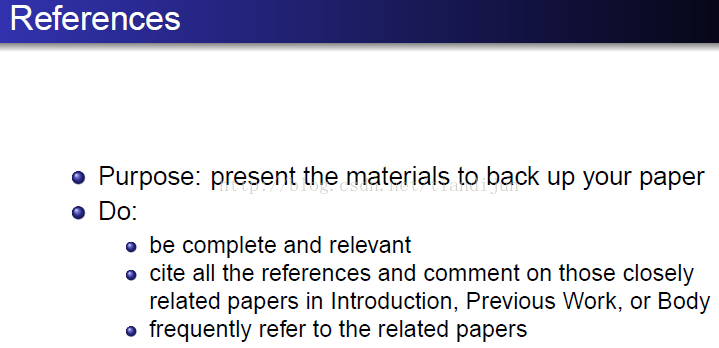
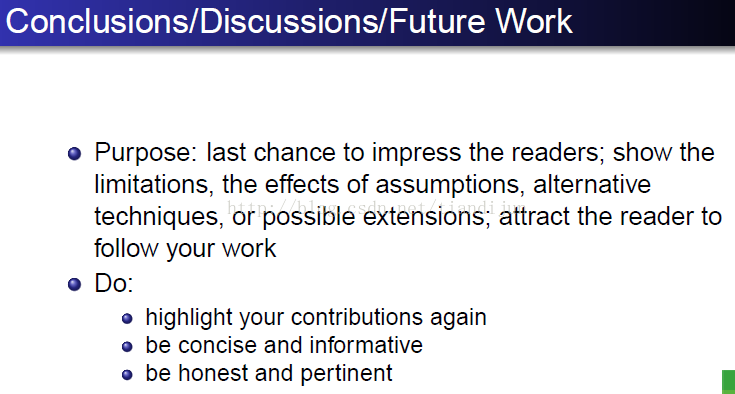
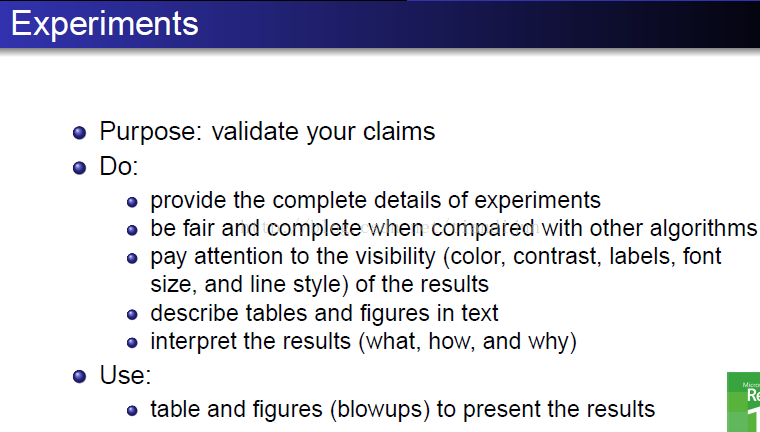
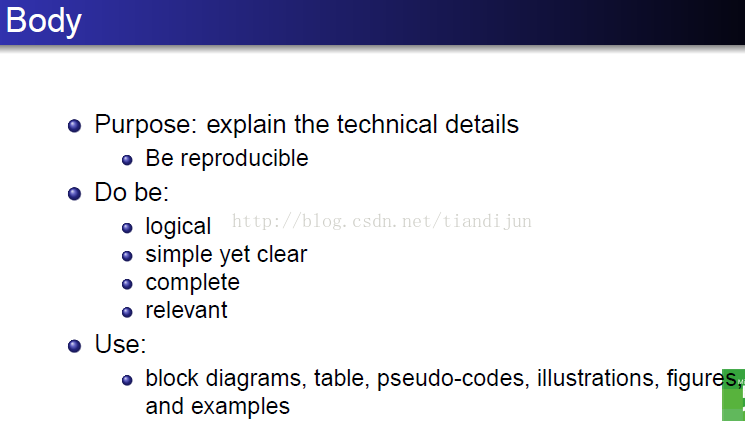
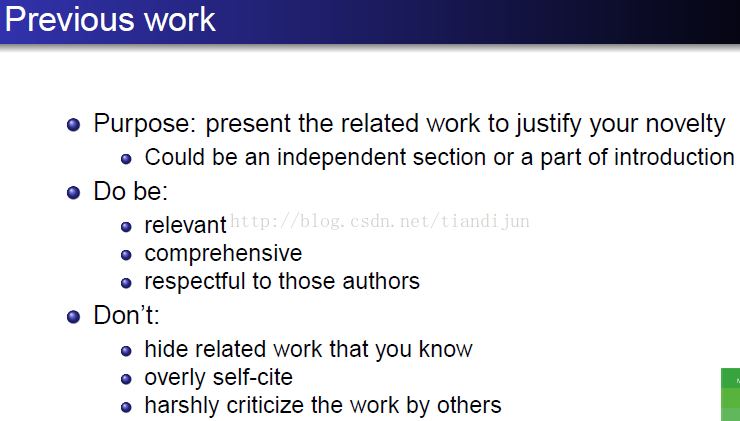

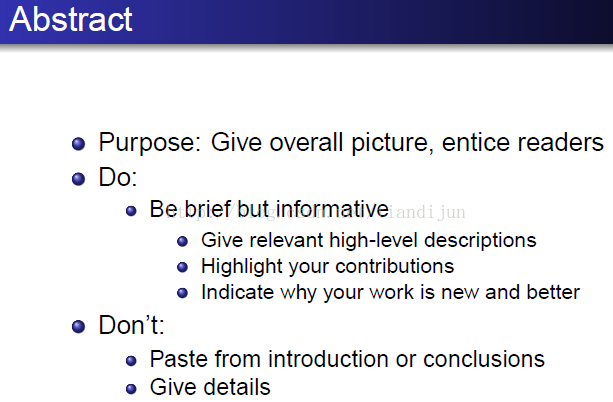
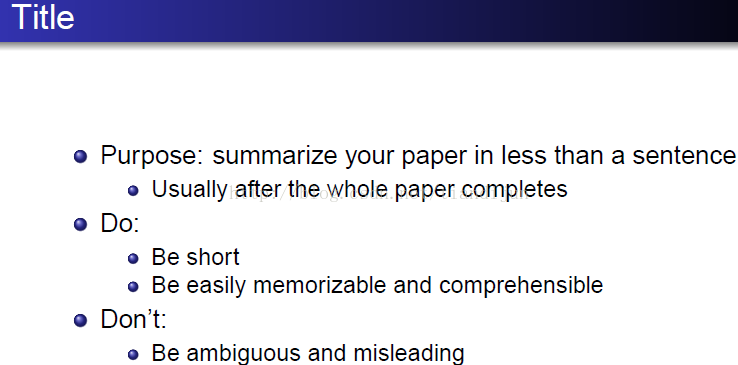
How to manage your writing process
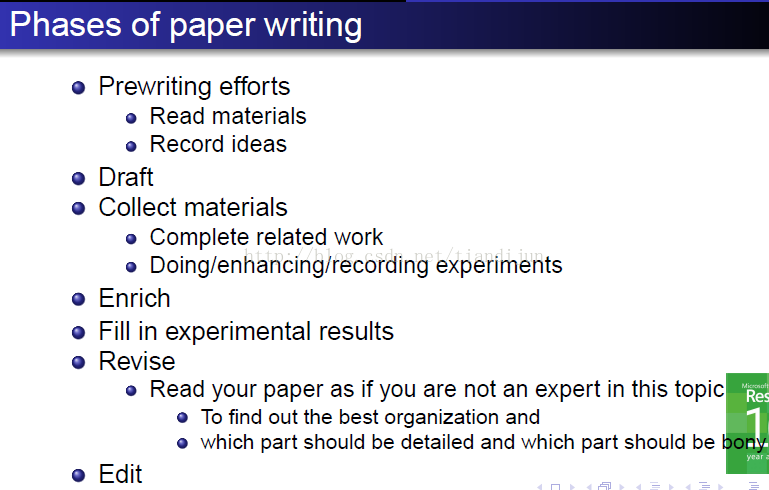

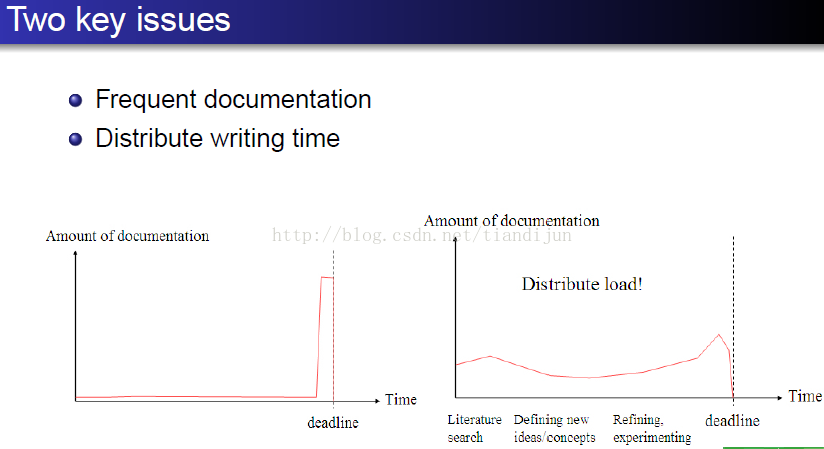
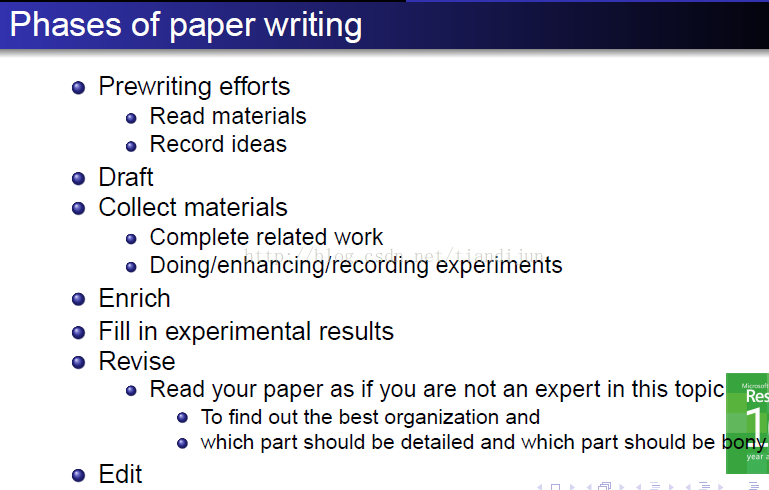
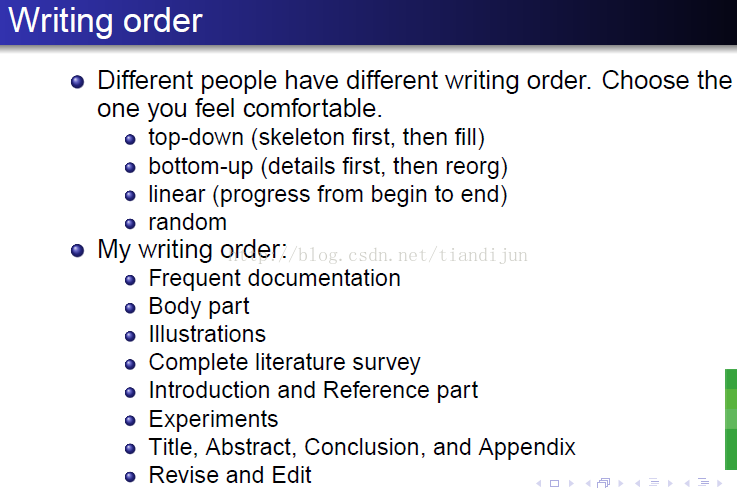
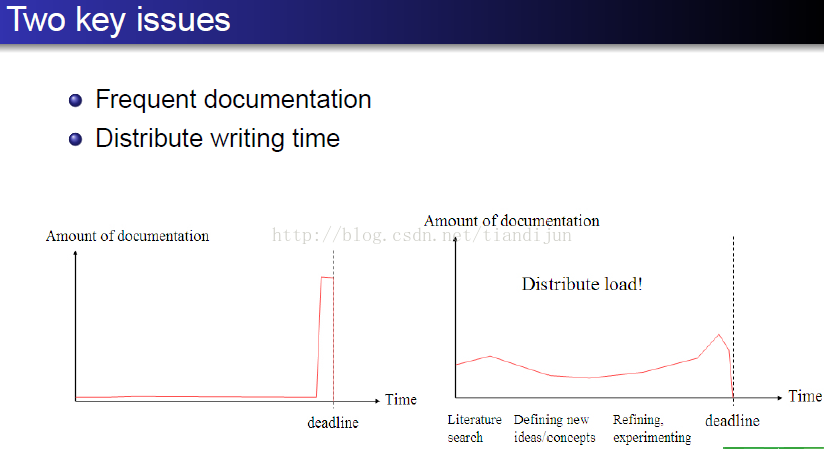
5 Writing good English
General tips and good habits
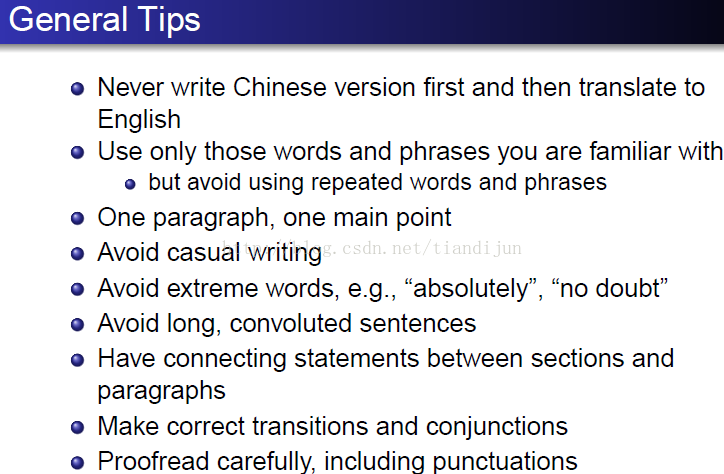
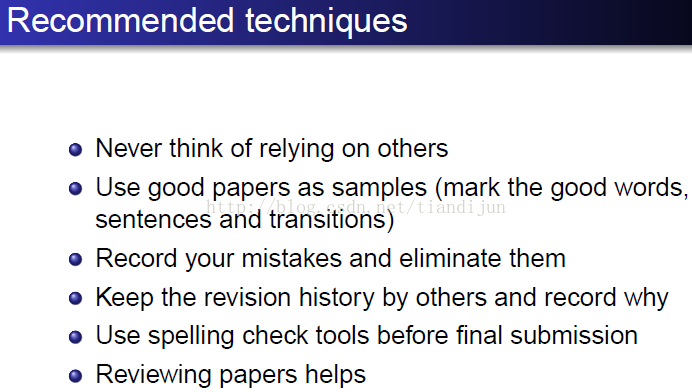
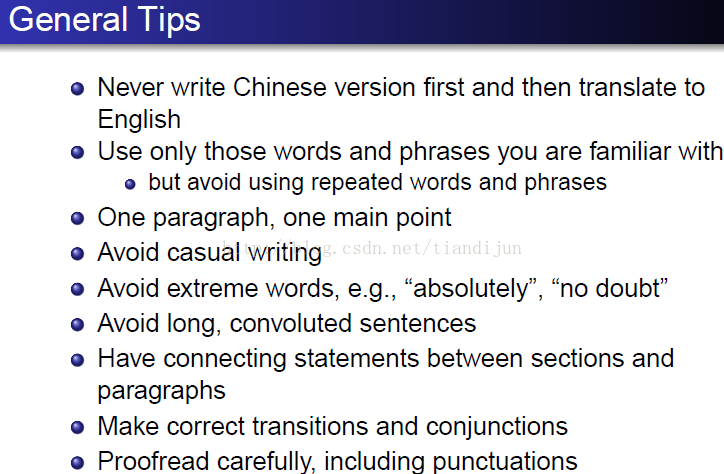

6 Conclusions
Key message on paper writing

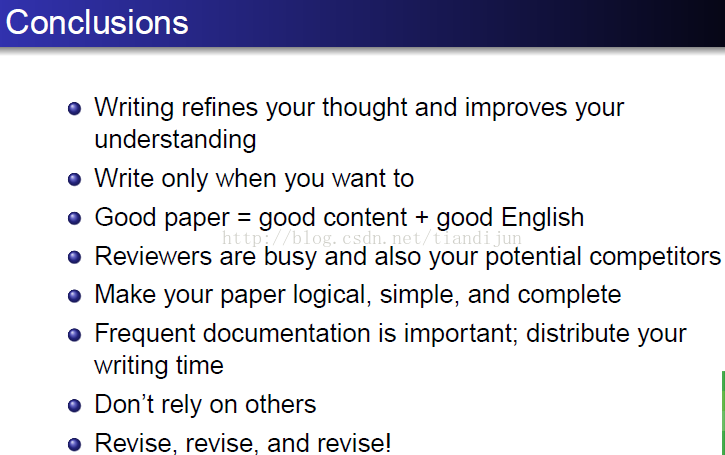
Check List before Handing in Your Paper
For English:
1. Check in WinEdit or other Latex inputprocessor for those words underlined with red. Make sure there is nomisspelling.
2. Avoid running sentences. In English, once the subject, verb, and object are complete, it should be a complete sentence,stopped by a period. This is not like Chinese.
3. One paragraph for a topic.
4. Use passive tense as few as possible.
5. When using an acronym, give its full name whenit first appears (except in title), e.g., “Principal Component Analysis (PCA).”
6. Check the plurals and tense.
7. Make clear the usage of “the” and “a”. Some ofthem are subtle, but in most of the cases, their usages are clear. Inparticular, use “an” before a word or a mathentity whose pronunciation leads with a vowel, such as “L^1-norm” and $h imesh$. Write “The XXX dataset/method is…” or “XXX is…” rather than “XXXdataset/method is…” Checkhttp://alt-usage-english.org/
8. If there are only two objects, A and B, write“Aand B”. Do not write “A, B”.
9. If there are more than two objects, A, B, …,Y, and Z, normally you can write both “A, B, …, Y, andZ” and “A, B, …, Yand Z”. However, the formeris recommended in http://alt-usage-english.org/. Anyway,this should be consistent throughout the paper.
10. Do not write “A, B,andC, etc.” Write “A, B, C, etc.” instead.
11. Do not write “isn’t”, “aren’t”, “don’t”,“doesn’t”, etc. Those are for spoken communication. Write “is not”, “are not”, “do not”, “does not”,etc., instead.
12. Do not write “can not”.Write “cannot” instead.
13. Notice the correct dots in “e.g.”, “etc.”, “etal.”, etc.
14. Put a comma before “respectively”.
15. Leave a space between texts and leftparenthesis, left bracket, or citation. Also leave a space between comma orperiod and the successive texts.
16. Use “``” and “`” in the .tex file for the left quotation mark.
Check withhttp://alt-usage-english.org/frequently if you are unsure.
For Math Expressions:
17. Use intuitive notations. A rule of thumb is that you use salient characters in their English name as their notations. This can greatly enhance memory association. However, the second rule is that youmust use different notations for different objects. So you have to balance between these two rules. There are also other notation conventions which you should also follow, such as using i, j, k etc. for enumeration, using Greek letters for angles.
18. For inner product, use “langle” and “ angle” instead of “<” and“>”. For norms, use “|” instead of “||”.
19. Every stand alone math expression should end with a punctuation, either comma or period, depending on whether it is at the end of a sentence.
20. If there are delimiters in a math expression,use “left” and “ ight”so that they can scale with the height of the math expression.
21. Align multi-line math arrays properly so that the whole expression looks good. Avoid stretching-out expressions.
For Figures and Tables:
22. For every figure or table, it must have acaption and be referred to in the body text. The detail of caption should bejust enough so that a reader do not have to refer to the body text tocomprehend it.
23. Label the axes of a figure. If they are not apparent, explain the axes in caption.
24. If you generate a figure by Matlab, use “print –dpsc XXXX.eps” to save the figure into EPS.This ensures high visual quality of the figure.
25. Do not merge multiple figures/images in asingle image. Label each sub-figure/image with “(a)”, “(b)”, “(c)”, etc., foreasy reference.
26.Try to avoid using color to refer to theobjects in a figure. Use line style of shape instead. But sometimes this ishard to achieve.
27. Check whether the curves/texts in a figure can be differentiable after printing on paper.
28. If you refer to multiple figures or tables simultaneously, write “Figures A and B” or “Tables A and B”, rather than “FigureA and Figure B” or “Table A and Table B.”
For References:
29. The reference information should be complete.
30. Every reference must be cited in the bodytext. Naturally achieve this by using a .BIB file.
31. Make the style of references consistent, e.g.,the journal or conference names should all in full names or all inabbreviations, the first names of authors should all in full or inabbreviations. Achieve this by compiling your .BIB file in a consistent style.Some first letters of human names or technical acronyms, such as “PSNR” and“Laplacian”, should always be capitalized in whatever bibstyle. Achieve this by adding parenthesis to the capitalized letters in the .BIB file.
--------------------------------------------End---------------------------------------------------------
References
Zhouchen Lin, How to Write Good Papers.
Sing Bing Kang, A Perspective on Doing Effective Research.
Ya-Qin Zhang, How to Publish a (Good) Paper?
Ashley Chang, English Writing.
本文转载于https://blog.csdn.net/tiandijun/article/details/41775223
